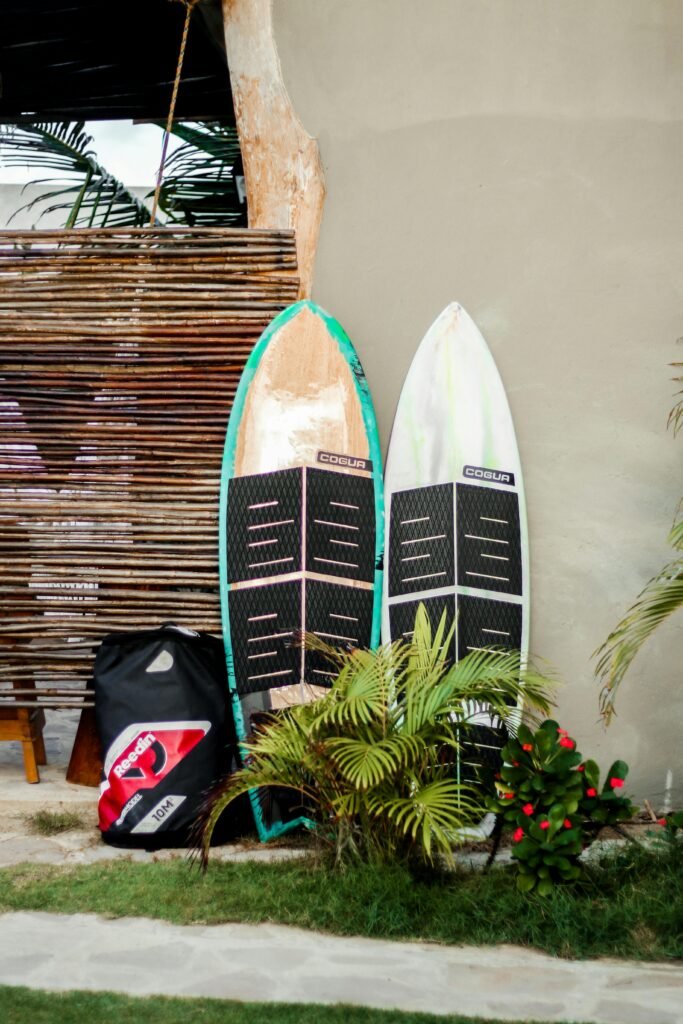Introduction to surf board bags
surf board bags play a crucial role in the protection and maintenance of surfboards, serving as an essential accessory for surfers of all skill levels. These bags are designed specifically to shield surfboards from various forms of damage, including dings, scratches, and UV exposure. Investing in a high-quality surfboard bag not only preserves the board’s integrity but also enhances a surfer’s overall experience by ensuring that their equipment remains in optimal condition.
There are two main types of surf board bags: soft cases and hard cases. Soft surf board bags are made from padded fabrics, offering lightweight protection while remaining flexible. This type of bag is ideal for everyday use and transportation, providing enough cushioning for regular travel without being cumbersome. On the other hand, hard cases provide superior protection, often constructed from rigid materials to withstand significant impacts. These bags are particularly beneficial for surfers who frequently travel long distances or those who are concerned about potential damage during transport.
Regardless of whether a surfer is a novice or an expert, the need for a surfboard bag cannot be overstated. A surf board bags does not merely protect the board; it also offers organizational benefits, such as pockets for accessories and personal items. Moreover, using a surf board bags contributes to the longevity of the board, helping surfers maximize their investment over time. With various options available in the market, it is essential for surfers to select a surfboard bag that aligns with their specific needs, preferences, and budget.

Types of surf board bags and Their Benefits
surf board bags are essential accessories that provide varying levels of protection for surfboards, catering to different needs and preferences. Among the most common types are padded bags, travel bags, and eco-friendly options. Each category has unique features that serve specific purposes, making it crucial for every surfer to
Padded surfboard bags are designed with extra cushioning and protection, typically utilizing foam padding to safeguard your board from bumps and impacts. These bags are ideal for everyday use, whether you’re heading to the beach or storing your board at home. They prevent dings, scratches, and other damage that might occur during transportation or casual use. The often lightweight nature of padded bags also makes them convenient for surfers who frequently travel short distances.
Travel surfboard bags, on the other hand, are crafted with durability in mind, providing extensive protection for surfers who venture on longer journeys. These bags often come with reinforced materials, additional padding, and features such as wheels or comfortable straps for easier navigation through airports or crowded places. Investing in a high-quality travel surfboard bag is particularly beneficial for those who participate in surf trips or competitions, as it minimizes the risk of damage during transit.
For environmentally conscious surfers, eco-friendly surfboard bags present an excellent alternative. Made from sustainable materials and processes, these bags serve the dual purpose of protecting your investment while contributing to environmental conservation. Many brands now offer biodegradable or recycled bags that do not compromise on quality or effectiveness. Choosing an eco-friendly surfboard bag allows surfers to align their passion for the waves with their commitment to protecting the planet.
In summary, identifying the right type of surfboard bag is crucial in ensuring that your equipment remains safe and intact. By understanding the differences between padded, travel, and eco-friendly options, surfers can make informed decisions based on their specific needs and lifestyles.

Choosing the Right surfboard bags for Your Needs
Selecting the most suitable surf board bags is crucial for protecting your valuable investment and ensuring its longevity. Several key factors should be considered when choosing the right bag for your surfing activities, including board size, travel frequency, padding preference, and budget.
First and foremost, understanding the dimensions of your surfboard is essential. Surfboard bags are designed to accommodate various board sizes, so accurate measurements will guarantee a perfect fit. To measure your surfboard, start by determining its length from the nose to the tail and its width at the widest point. Once you have these measurements, refer to the specifications provided by the surfboard bag manufacturer to find a suitable option. Accurate sizing will not only enhance protection but also facilitate ease of transport.
Travel frequency is another significant consideration when selecting surfboard bags. If you frequently travel for surf trips, choosing a more robust, padded bag may be in your best interest to ensure maximum protection during transit. Conversely, if your surfing takes place primarily at local breaks, a less bulky and lightweight bag may be adequate. The added padding will offer extra defense against the typical wear and tear experienced in daily use and travel.
Your budget will play a critical role in the selection process as well. Surfboard bags come in a range of prices, reflecting the quality, padding, and additional features offered. While it’s crucial to find a bag that fits your financial plan, investing in a high-quality surfboard bag can save you money in the long run by protecting your board from damage, thus prolonging its lifespan.
Ultimately, considering these factors will lead to a better-informed purchase decision regarding surfboard bags, ensuring that your board is well-protected and ready for action whenever the waves call.

Caring for Your surf board bags : Maintenance Tips
Maintaining surf board bags is crucial for prolonging their lifespan and protecting your surfboards effectively. Regular checks for wear and tear should be a part of your routine. Inspect the bag periodically, focusing on the seams, zippers, and any other areas that might be prone to damage. This proactive approach allows you to address minor issues before they develop into more significant problems, ensuring that your surfboard bags remain in optimal condition.
Cleaning your surfboard bag is another essential aspect of maintenance. Sand, salt, and grime can accumulate on the exterior and interior over time, which not only affects the bag’s appearance but can also shorten its lifespan. To clean your bag, first remove any boards and accessories. Use a soft brush or cloth to remove loose debris, followed by a gentle rinse with fresh water. If necessary, use a mild soap solution to scrub away stubborn spots, ensuring that you thoroughly rinse off any soap residue. Avoid abrasive cleaners as they can damage the fabric of your surfboard bags.
Proper storage is equally important in maintaining your surfboard bags. When not in use, store your bags in a cool, dry place away from direct sunlight. Prolonged exposure to UV rays can weaken the materials and cause fading. If possible, store your surfboard bag flat or hang it up to prevent creasing and potential structural damage. Additionally, try to keep the bag away from areas where it might be prone to impact or other stressors that could lead to wear.
By following these maintenance tips for surfboard bags, you can significantly enhance their durability and functionality, ultimately protecting your valuable surfboards for many seasons to come.





Leave a Reply